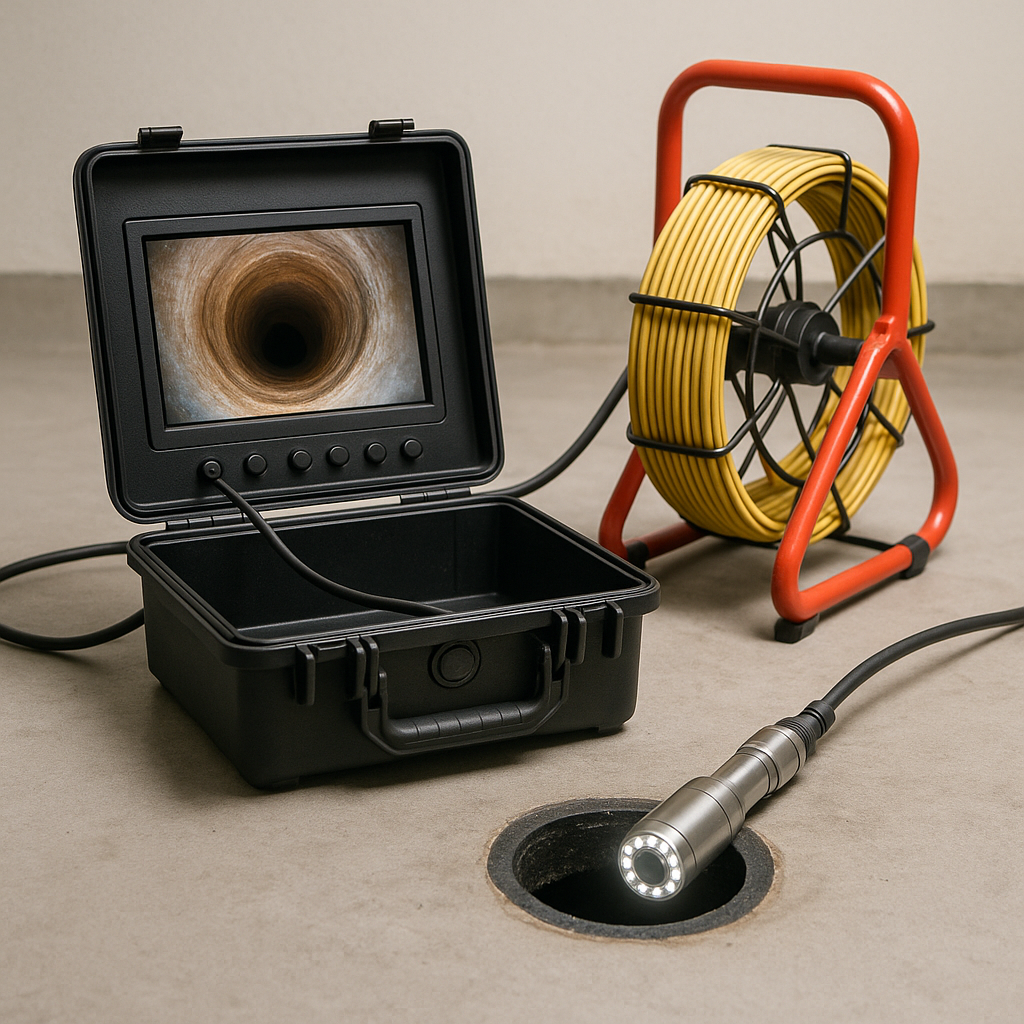A drains camera is a specialized tool used to inspect the inside of pipes and drains. It allows professionals and homeowners to identify blockages, leaks, and structural damage without invasive digging. This technology provides a clear, real-time view of plumbing issues, making it easier to diagnose and solve problems accurately.
Using a drains camera can save time and money by pinpointing the exact location of a problem. It reduces guesswork and unnecessary repairs. Many plumbing services rely on these cameras to offer more efficient and precise solutions.
Understanding how a drains camera works and its benefits can help anyone facing drainage issues make better choices. It’s an essential device in modern plumbing diagnostics that improves maintenance and repair processes.
Understanding Drains Camera Technology
Drains cameras enable precise inspection of pipes and underground drainage systems. They combine optical technology with durable hardware to navigate narrow, obstructed, or long pipe routes. Their design varies according to the inspection needs and environmental conditions.
How Drains Cameras Work
Drains cameras operate using a flexible cable attached to a waterproof camera head. Operators insert the camera into the pipe, transmitting real-time video footage to a monitor. This allows observation of blockages, cracks, or build-up inside drains.
Lighting is critical; LED lights around the camera head illuminate dark pipes. This ensures clear imaging regardless of pipe material or lighting conditions.
The cable is often motorized or manually fed, enabling movement through bends and thick pipes while maintaining signal integrity. Some models include sonar or sensors for additional diagnostics.
Key Features and Components
Camera Head: Small, waterproof, and housed in durable metal or plastic. It usually rotates to give a 360-degree view inside pipes.
Cable: Flexible and resistant to kinking. Length varies from 30 to 300 feet, depending on the system’s scope.
Lighting: Integrated LEDs provide consistent, bright illumination in complete darkness.
Monitor/Recorder: Displays live footage; some systems offer recording for later analysis.
Some advanced units include:
- Wireless transmission
- Measurement software
- Sonar depth tracking
Types of Drains Cameras
Push Rod Cameras: Standard option with a semi-rigid cable pushed manually. Best for straight or gently curved pipes under 100 feet.
Crawler Cameras: Motorized and remote-controlled with wheels. Suitable for larger, complex pipe networks and longer distances.
Pan-and-Tilt Cameras: Offer a directional camera head capable of precise angle adjustments remotely. Ideal for detailed inspections.
Wireless Pipe Cameras: Operate without cables for easier deployment but are limited in range and battery life.
Each type matches specific use cases based on pipe diameter, length, and inspection detail required.
Applications and Benefits of Drains Cameras
Drains cameras serve multiple important roles across various settings. They help locate blockages, identify pipe damage, and reduce the need for destructive investigations. Users save time and avoid guesswork with visual inspection data.
Residential Plumbing Inspections
Drains cameras allow plumbers to inspect residential pipes without dismantling walls or floors. They locate clogs caused by hair, grease, or foreign objects precisely. This speeds up repair and reduces home disruption.
Homeowners benefit from early detection of pipe corrosion or root intrusion, preventing costly leaks. Cameras with LED lights and flexible cables navigate narrow pipes easily. This technology also helps verify repairs by providing before-and-after footage.
Commercial Pipeline Assessment
In commercial buildings, drains cameras inspect large and complex pipeline systems efficiently. Regular camera inspections detect wear, cracks, or sediment buildup in main sewer lines or storm drains.
Businesses avoid major plumbing failures by scheduling routine camera scans. Cameras reduce downtime because problems are spotted early, allowing planned maintenance. This is vital for facilities with high water usage or strict sanitation needs.
Cost Savings and Efficiency
Using drains cameras saves money by targeting issues directly, eliminating unnecessary digging or pipe replacement. Faster diagnosis minimizes labor hours and material costs.
Efficiency increases with digital reports and recordings that aid communication between plumbers and clients. This transparency can improve customer trust and facilitate quicker approvals for repairs. The investment in camera equipment often pays off in reduced service calls and repeat visits.
